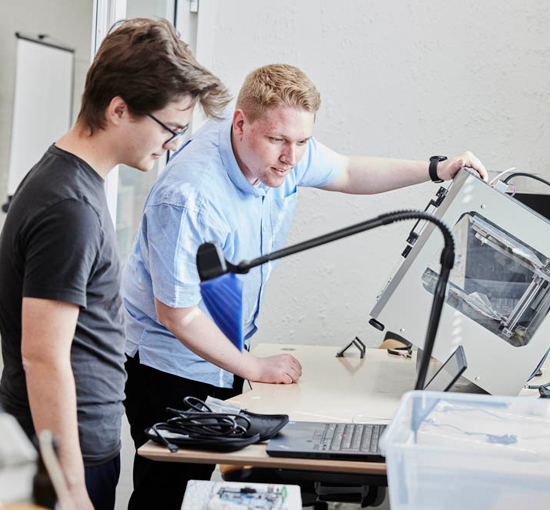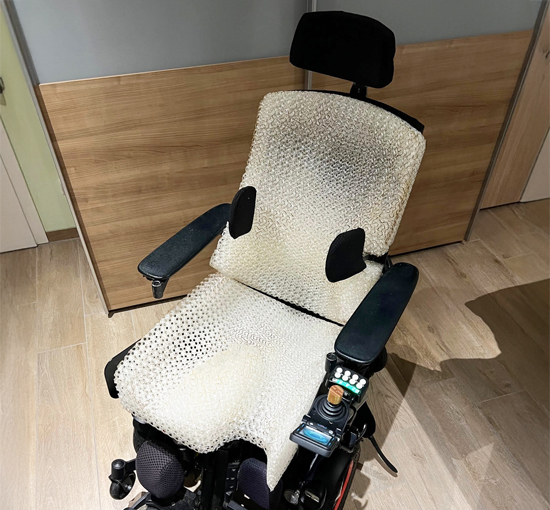The Embrace Seat solution
A purpose-built manufacturing system for seating aids using Programmable Foam®, an advanced 3D printing technology.
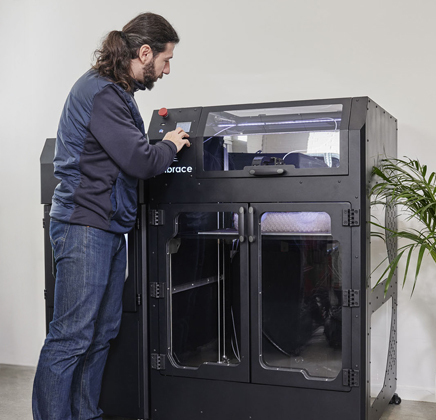
Embrace Seat solution - everything you need in a bundle
The Solution:
- Specifically designed for printing large-sized objects in Programmable Foam® using soft TPU.
- Eliminates the need for extensive knowledge of printer specifications and materials.
- Reduces waste and post-processing, to save valuable time and effort.
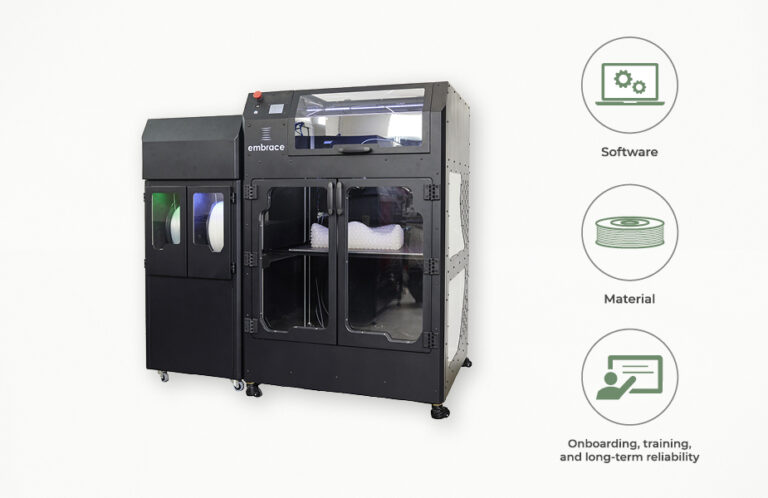
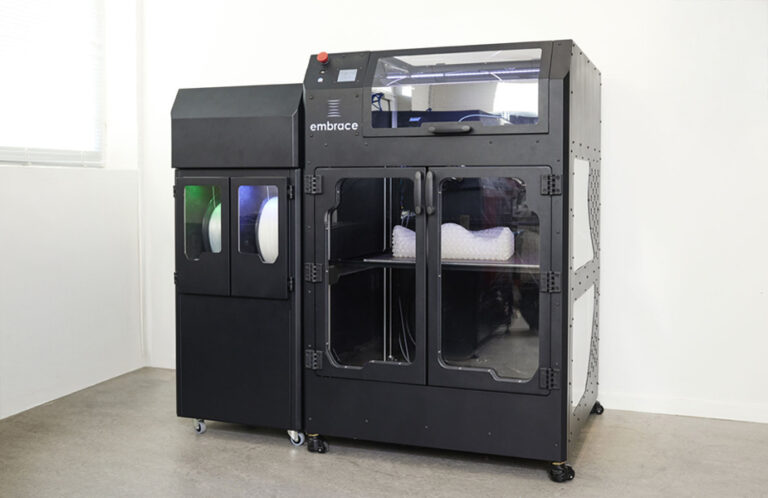
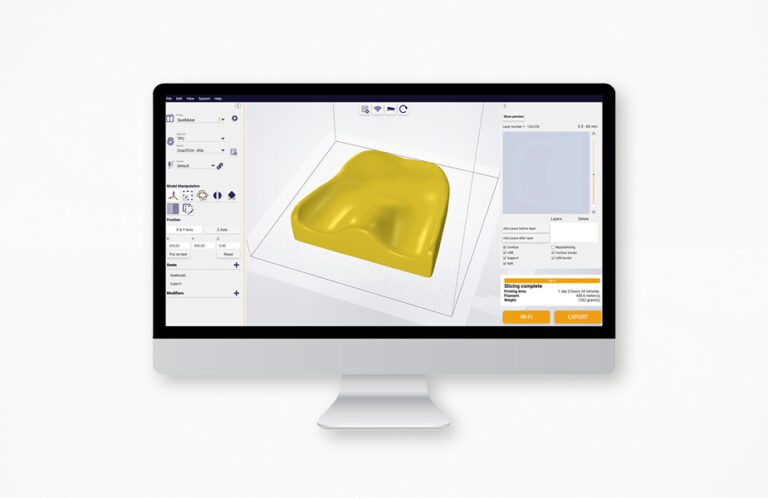
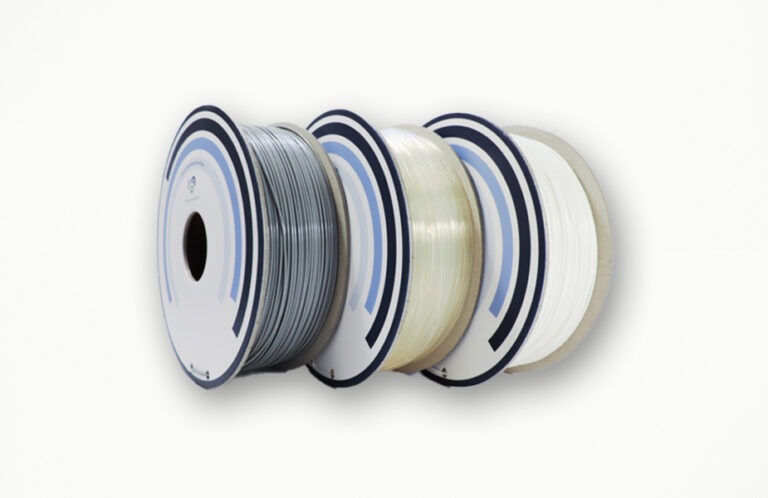
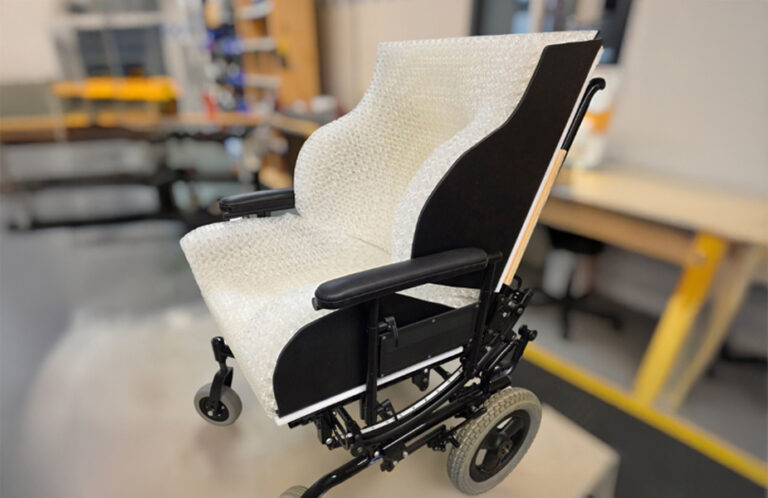
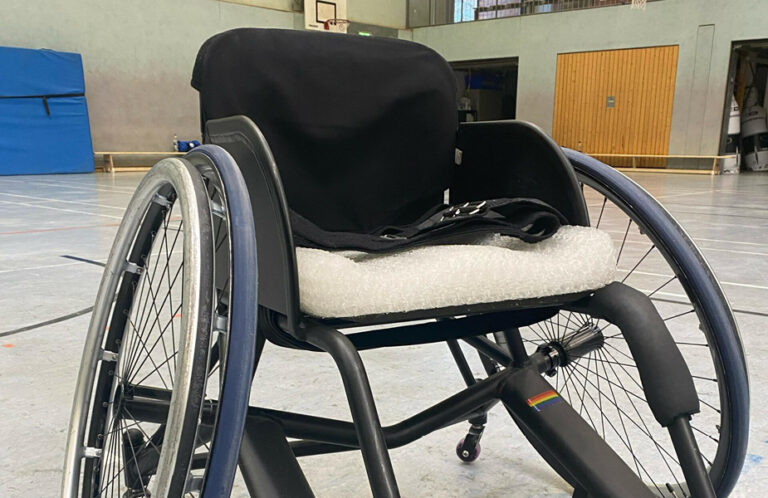
SeatMaker - Advanced 3D printer
Key specifications that set the Embrace SeatMaker apart:
- Optimized for soft TPU, specifically for seating applications.
- Workspace dimensions: 60cm x 60cm x 65cm.
- Material properties: Certified and approved TPU filament.
- Automatic spool change for full utilisation and continuous printing.
- Automatic calibration.
- Power efficient – normal operation <150 W.
REALvision Embrace
A streamlined workflow from 3D model to printed product
REALvision Embrace CAM software supports a smooth, three-step workflow to produce personalized 3D-printed seating solutions. It starts with preparing the 3D model and ends with a ready-to-print, customized design.
1. Prepare your 3D model
Start by preparing a 3D model in your CAD software that reflects the user’s anatomy and needs. This can be a fully molded seat based on a vacuum impression, 3D scan, or pressure map, or a standard-sized cushion adapted using patient-specific data to define custom comfort and support zones. This design file forms the foundation for targeted customization in the next steps.
2. Define soft and hard zones
With the 3D model ready as stl or obj, import the file into REALvision Embrace CAM to define precisely where soft and hard zones are needed. Apply paintable surface-based modifiers with adjustable brush sizes or embed shape-based modifiers from the built-in library. An intuitive slider helps fine-tune each zone, while our patented technology ensures seamless gradient transitions for optimal comfort and support.
3. Preview and print
Use the built-in visualization tools—like the modifier overlap view—to preview how the modifiers will be applied in the final print. You’ll also get accurate estimates of print time and material usage, helping you plan and manage production efficiently.
Printing material
Programmable Foam® is our patented 3D-printed foam technology designed to replace traditional molded foams in custom seating applications. It offers superior comfort, hygiene, and performance—engineered entirely from our specialized CREAtech TPU (Thermoplastic polyurethane) material.
The material and structure of Programmable Foam® bring multiple advantages:
- Non-absorbing and washable: The foam does not retain moisture and can be safely washed in a standard washing machine at up to 60°C (140°F), making it easy to clean and maintain.
- Fire-retardant: Tested and compliant with EN 1021-1, EN 1021-2, and ISO 16840-10 fire safety standards.
- Biocompatible and skin-safe: The material has passed critical biocompatibility assessments: Cytotoxicity testing according to ISO 10993-5:2009 and in vitro sensitization following ISO 10993-10:2021
- Acute skin irritation in compliance with ISO 10993-23:2021
These validations confirm the foam’s safety for prolonged skin contact and use in health-related applications. - Free from harmful substances: It is RoHS III compliant and free from Bisphenol A (4,4′-isopropylidenediphenol).
- From a sustainability standpoint, 3D printing with CREAtech PF TPU generates virtually zero waste, and when paired with a TPU recycling scheme, significantly reduces the environmental impact compared to traditional foam manufacturing.
- The clean, dust-free additive manufacturing process makes it possible to produce seats and cushions in standard office or workshop environments—without the need for special ventilation systems.
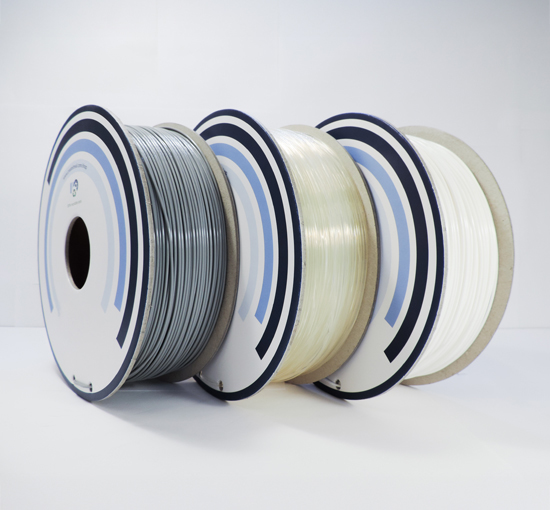
Onboarding, training, and long-term reliability
Getting started with 3D printing can feel like a big step—but our dedicated customer success team ensures that it’s a smooth one. From the moment your Embrace solution arrives, we’re by your side to help you set up, learn, and grow with the technology.
Step-by-step onboarding
We guide you through the setup of both hardware and software, so you’re ready to begin production from day one. Every stage is designed to be straightforward, with clear instructions and personal support to make the transition easy and efficient.
Training and knowledge sharing
To help you get the most out of your Embrace solution, we provide comprehensive user guides, video tutorials, and tailored training sessions. As new features and improvements are released, we make sure you’re always up to date—so your workflow keeps improving with time.
Ongoing customer support
We’re here whenever you need us. Whether it’s answering questions, troubleshooting an issue, or offering advice, our team works closely with both you and our engineers to support reliable, high-quality production.
Logistics and material management
We take care of order processing for printers, materials, and spare parts—keeping your inventory stocked and your delivery schedule clear. You always know what to expect, and when.
Creative and technical services
From functional print files to label and sticker designs, we support both the technical and visual aspects of your products. We also offer print services where needed—delivering parts with precision and attention to detail.
Built-in maintenance and spare parts
To maintain consistent print quality, our service model includes the proactive shipment of critical spare parts. Each year, we send essential wear-and-tear components to keep your printer running at its best.
If additional parts are needed—due to damage or unexpected wear—they’re always available for quick delivery, helping you avoid unnecessary downtime.
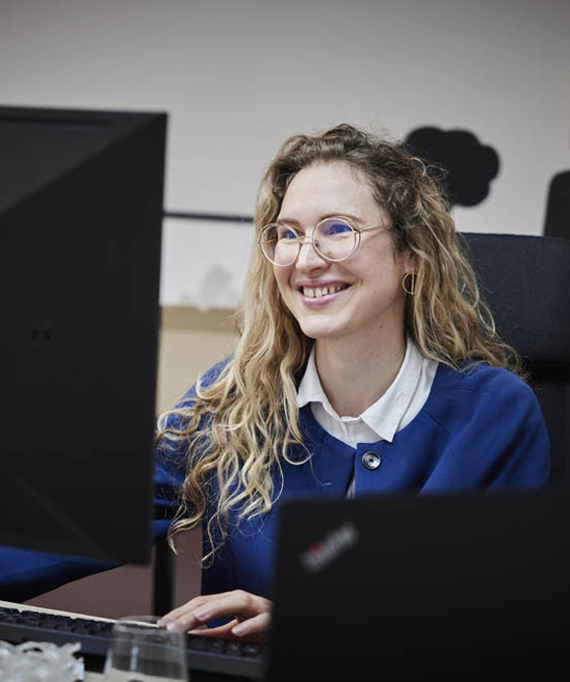
Get a quote
Produce molded seats and cushions with this solution
Molded seats
Cushions
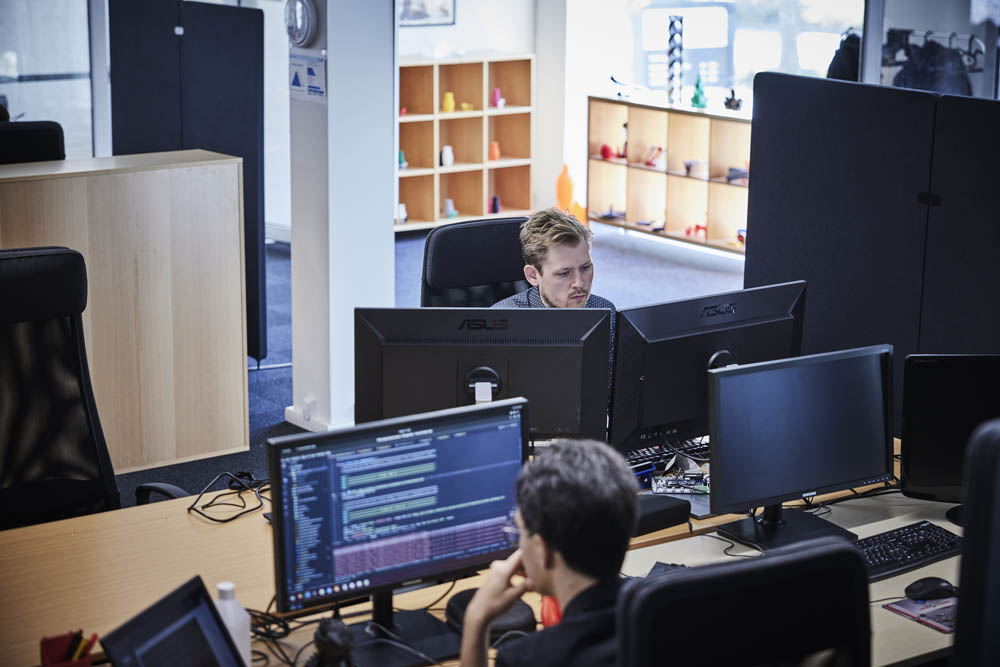
Integrate with your CAD system
Upgrade to mass production without missing the advantages of a simple and sustainable solution.
Integration into your CAD software makes it possible to prepare the print and add the insole to the print management system in one go, using a cloud-based version of the REALvision software engine.
With several printers connected, you can have a central print farm or manage several printers in local store locations, creating a decentralized print farm.
How to get started with 3D printed seats or cushions?
We are prepared to assist you in implementing a digitalized workflow and starting production through 3D printing.
- Define your business case.
- Create samples.
- Determine a suitable solution.
- Control and initiate production.
- Scale production.
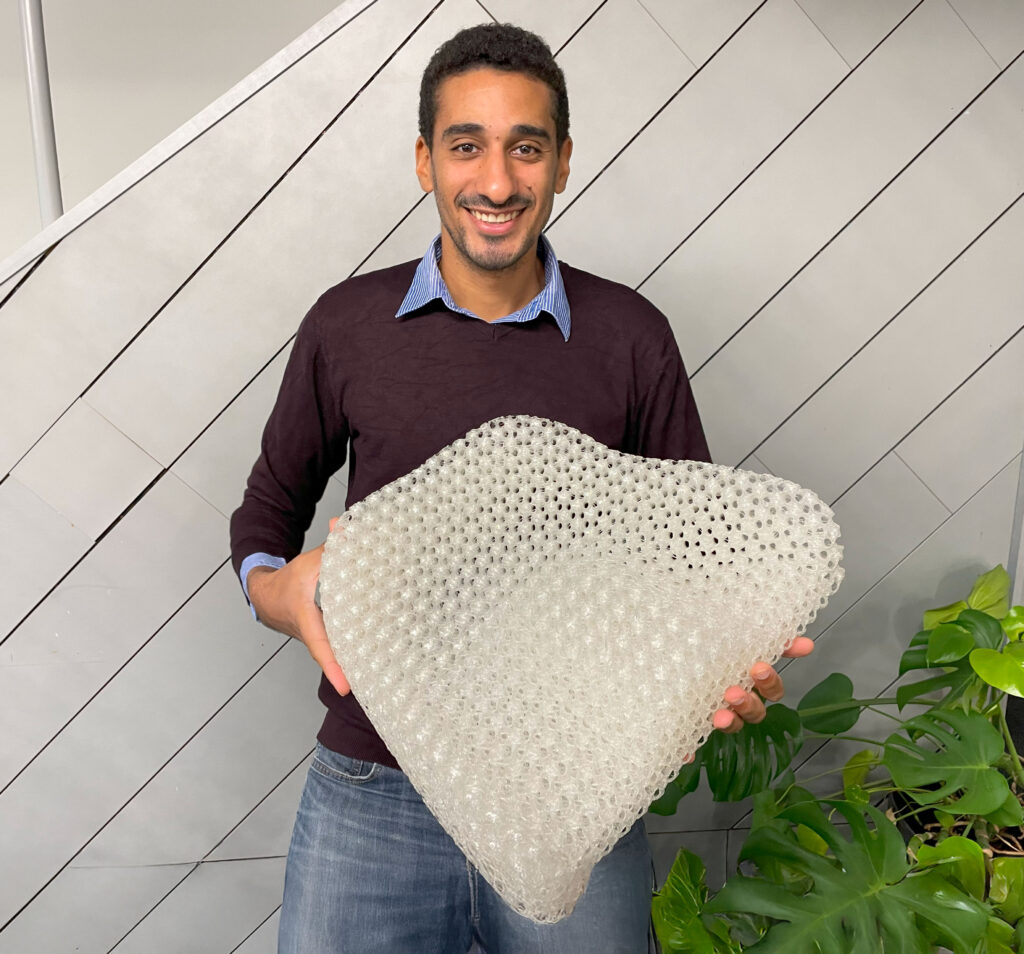
Embrace Seat solution – everything you need in a bundle
Unlike an off-the-shelf 3D printer, the SeatMaker is:
- Specifically designed for printing large-sized objects using soft TPU.
- Eliminating the need for extensive knowledge of printer specifications and materials.
- The good news is that post-processing is unnecessary, saving you valuable time and effort.
Unique SeatMaker
Here are some key specifications that set the Embrace SeatMaker apart:
- Optimized for flexible TPU, specifically for seating applications
- Workspace dimentions: 60cm x 60cm x 65cm
- Material properties: Certified and approved TPU filament
- Automatic spool change system for maximum utilization
- Automatic bed leveling
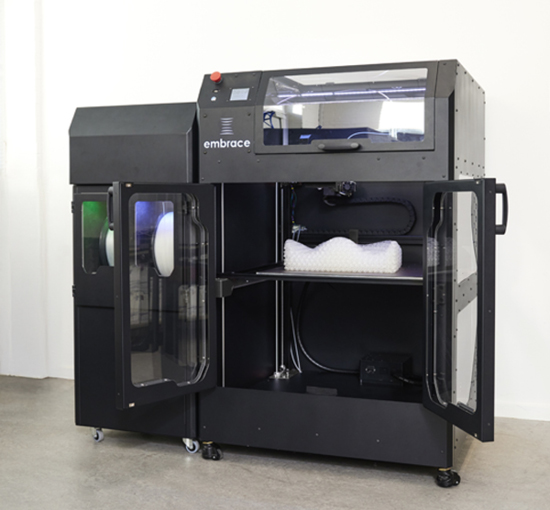
Embrace REALvision
A streamlined workflow
REALvision Embrace CAM software enables a streamlined single workflow to produce your products. The production process of a 3D-printed seat involves three steps:
- Create a 3D model to generate the design file. Input sources include a vacuum bag, 3D scanner, pressure mapping, and parametric data.
- Use the software to easily add soft and hard zones precisely where needed, with an intuitive slider. Our patented technology seamlessly incorporates gradients between these zones.
- Prepare, preview, and print your model. Gain a precise estimation of the printing time and material usage.
Implement hard and soft zones
- Apply soft and hard zones by painting on the model’s surface with paintable surface-based modifiers using different brush sizes.
- Add soft and hard zones by embedding shapes within your model using pre-installed modifiers
Accurate time management
REALvision Embrace CAM software enables you to prepare your object with precise printing time and accurate material estimation.
Visualize the results
Modifier overlap view allows you to see how the modifiers will be embedded in the printed object. You can get a better sense of how the hardness and stiffness zones are applied.
CREAtech material
We have developed our special 3D print filament, CREAtech, made from flexible TPU (Thermoplastic polyurethane) material to optimize the printing results and properties. The outcome is a product that is washable and fire retardant (complies with EN 1021-1 and EN 1021-2).
From a manufacturing point of view, printing limits the waste to zero. With a recycling scheme of TPU-based products, the environmental footprint is reduced significantly compared to traditional foam products.
Another advantage of using additive manufacturing technologies with melting plastic parts as infill is to ensure a no-dust production environment. There is no hindrance to operating the 3D printing production in a standard office environment.

Onboarding and training
Our customer success team is your first point of contact, dedicated to ensuring your 3D production journey starts smoothly and keeps running without friction. From onboarding to ongoing support, we’re here to guide you every step of the way. We continuously share knowledge through training and resources to help you get the most out of your Embrace solution. And as your needs evolve, we introduce new possibilities to keep your production future-ready.
- Onboarding and setup – We guide customers through the onboarding process for software and hardware, ensuring they’re ready to use their Embrace solution from day one.
- Order and logistics management – We handle everything from processing orders for printers, materials, and spare parts to managing stock and providing tracking and delivery updates, keeping operations smooth and reliable.
- Customer education – We create and update user guides and instructional videos, deliver product training, and share practical tips to help customers get the most out of their tools.
- Creative and technical tasks – We design product-related materials such as labels and stickers, and offer print services that combine technical precision with creative support.
- Customer interaction and support – We troubleshoot issues, answer questions, and work closely with both customers and our technical team to ensure successful 3D production outcomes.

Spare parts and maintenance
To keep your production running smoothly, our service fee includes automatic delivery of critical spare parts, so you always have them on hand when needed. In addition, we ship essential wear-and-tear parts annually to ensure your printer continues to perform at its best.
If additional parts are needed – for example, due to accidental damage or unexpected issues – they are always available for purchase and can be shipped quickly to minimize downtime.
